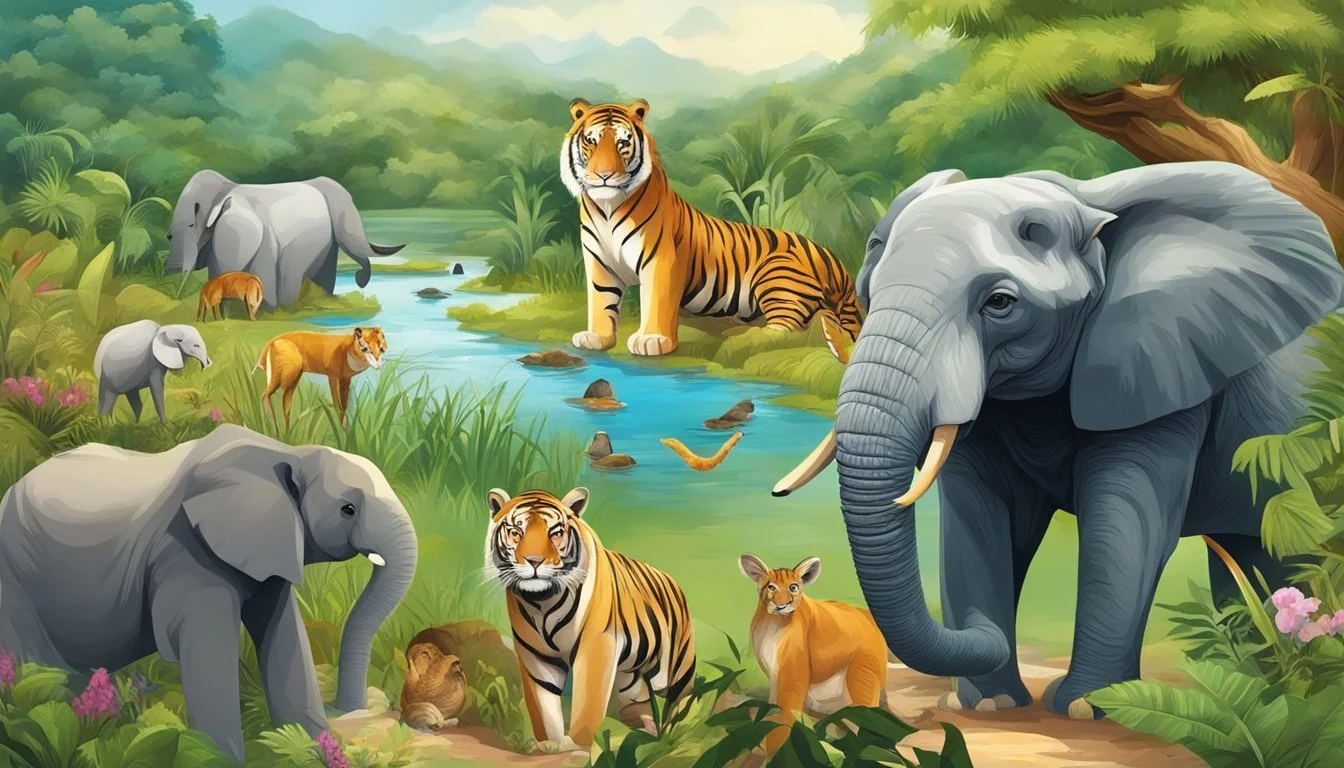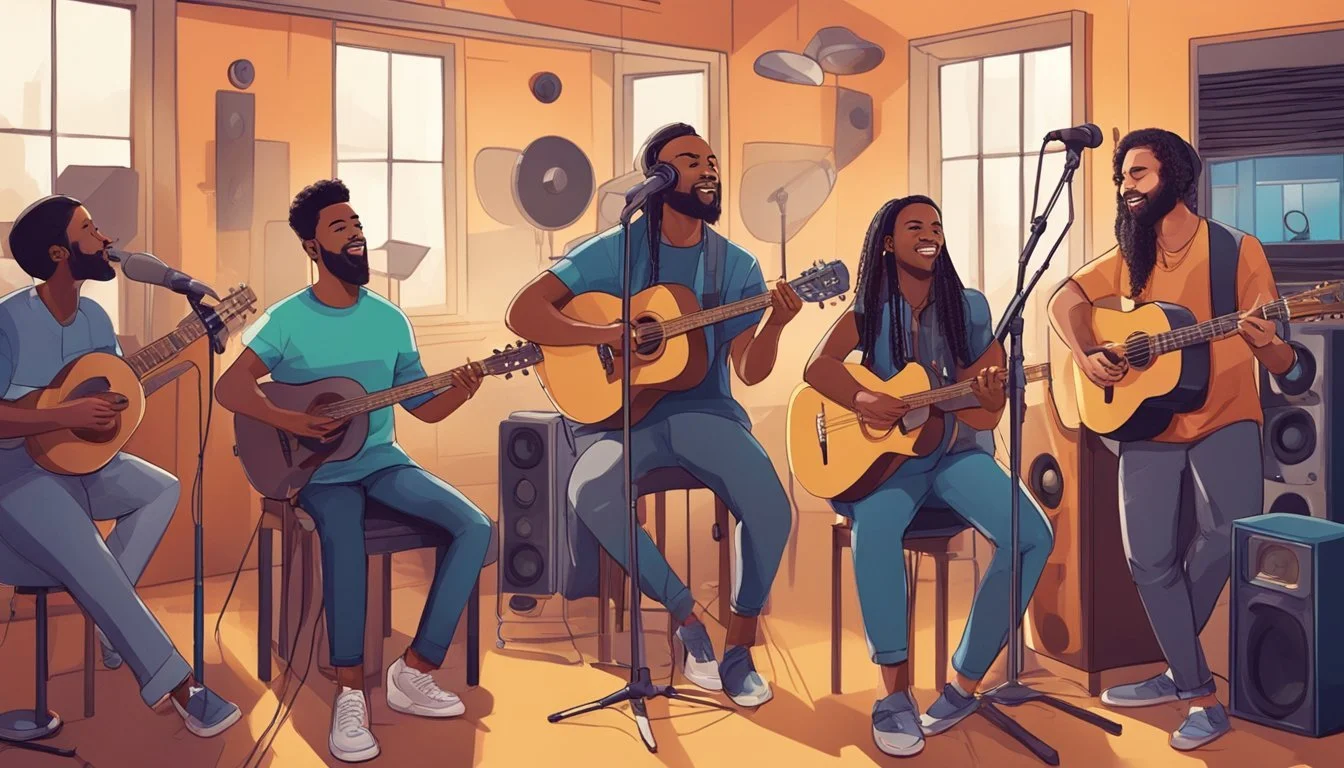We Are the World: The Star-Studded Night That Changed Music Forever
The 1985 charity single "We Are the World" brought together dozens of music's biggest stars for a historic recording session. Netflix's new documentary "The Greatest Night in Pop" offers an unprecedented behind-the-scenes look at this iconic event. The film reveals the creative chaos and logistical challenges involved in gathering over 40 celebrities in a single studio to record a song that would become a global pop culture phenomenon.
Director Bao Nguyen chronicles the entire process, from the initial concept to the final recording. Viewers get an intimate glimpse of music legends like Michael Jackson, Lionel Richie, and Bruce Springsteen collaborating on this ambitious project. The documentary highlights both the artistic vision and the organizational prowess required to pull off such a monumental undertaking.
"The Greatest Night in Pop" provides fresh insights into a pivotal moment in music history. It showcases the power of artists uniting for a cause and the lasting impact of "We Are the World" on popular culture. The film offers a nostalgic yet revealing exploration of how this beloved song came to life.
The Genesis of 'We Are the World'
'We Are the World' emerged from a desire to help African famine victims, bringing together top music stars for an unprecedented collaboration. The project's origins, songwriting process, and star-studded lineup set the stage for a historic musical event.
Background and Inspiration
In 1984, the devastating Ethiopian famine caught global attention. Inspired by Band Aid's success in the UK, Harry Belafonte envisioned a similar effort in the US. He approached Ken Kragen, a prominent music manager, to bring the idea to life.
The concept gained momentum after the American Music Awards in January 1985. Lionel Richie and Michael Jackson were tapped to spearhead the project. Their involvement drew immediate interest from other artists.
USA for Africa was established as the charitable foundation to oversee the initiative. The organization aimed to raise funds and awareness for African famine relief efforts.
Songwriting and Composition
Lionel Richie and Michael Jackson took on the task of writing 'We Are the World'. They worked tirelessly to create a song that would resonate globally.
The duo met at Jackson's family home in Encino, California. They spent long hours crafting lyrics and melodies that would inspire unity and compassion.
Jackson and Richie aimed for a simple yet powerful message. They wanted a song that people worldwide could sing along to easily.
The final composition blended pop, rock, and gospel elements. It featured a catchy chorus and verses that allowed for multiple solo performances.
Assembling the Superstars
Ken Kragen and the organizers reached out to top artists across various genres. The response was overwhelmingly positive.
The recording was strategically scheduled for January 28, 1985, after the American Music Awards. This timing ensured many stars would already be in Los Angeles.
A-list performers like Bruce Springsteen, Bob Dylan, and Tina Turner eagerly joined the project. The diverse lineup represented a wide range of musical styles and generations.
Artists were asked to check their egos at the door. The focus was on collective effort for a greater cause, not individual stardom.
The Historic Recording Session
The "We Are the World" recording session on January 28, 1985, brought together an unprecedented array of musical talent. This historic night saw collaboration, creativity, and challenges as artists worked to create a charitable masterpiece.
Organized Chaos in the Studio
Quincy Jones, the producer, orchestrated the session with precision. He hung a sign reading "Check your ego at the door" to set the tone. The studio buzzed with excitement as artists arrived throughout the evening.
Michael Jackson and Lionel Richie, the song's writers, made last-minute adjustments. Time pressure was intense, as the song had only been completed days before.
Artists received lyric sheets and practiced their parts. The atmosphere was a mix of nervousness and camaraderie as superstars became equals in service of the cause.
Notable Collaborations
Unexpected pairings created magical moments. Bruce Springsteen and Stevie Wonder's duet became a highlight of the recording. Their contrasting styles blended beautifully, showcasing the song's unifying message.
Diana Ross and Ray Charles added soulful depth to their sections. Their performances elevated the emotional impact of the lyrics.
Cyndi Lauper's distinctive voice stood out during her solo, adding a unique flavor to the ensemble.
Unprecedented Gathering of Talent
The sheer star power in the room was staggering. Kenny Rogers and Dionne Warwick lent their voices to the chorus, alongside dozens of other chart-topping artists.
Huey Lewis recalled the surreal experience of singing next to musical icons. The collective talent created an energy that was palpable throughout the night.
Despite individual fame, all participants embraced teamwork. This unity of purpose resulted in a powerful performance that transcended individual egos.
Cultural Impact and Legacy
"We Are the World" left an indelible mark on popular culture and philanthropy. The song's message of unity and compassion resonated globally, inspiring millions and setting a new standard for celebrity-driven charitable initiatives.
Raising Awareness and Funds
The "We Are the World" project brought unprecedented attention to the Ethiopian famine crisis. It raised over $63 million for African famine relief, demonstrating the power of music to mobilize public support for humanitarian causes. The song's success highlighted the potential of celebrity activism to effect real change.
The American Music Awards recognized the project's impact, honoring it with two awards in 1986. This recognition further amplified the song's message and charitable mission.
Influence on Future Charity Singles
"We Are the World" became a blueprint for subsequent charity singles. It inspired similar collaborations like Band Aid's "Do They Know It's Christmas?" and numerous national adaptations.
The project's success encouraged artists to use their platforms for social causes. It paved the way for benefit concerts like Live Aid and established a model for celebrity-driven fundraising efforts.
Sustained Relevance in Music History
The song's legacy continues to resonate decades after its release. It remains a cultural touchstone, often performed at significant events and covered by new generations of artists.
"We Are the World" is frequently studied in music history courses as an example of music's potential to drive social change. Its enduring popularity in karaoke bars and school recitals speaks to its continued cultural relevance.
The song's message of collective humanity and hope remains powerful, ensuring its place in the pantheon of socially conscious music.
Behind-The-Scenes and Production
The creation of "We Are the World" involved intense collaboration and complex logistics. Key figures like Quincy Jones and Ken Kragen played pivotal roles in bringing the project to life, overcoming various challenges along the way.
The Role of Producers and Directors
Quincy Jones served as the primary producer for "We Are the World." His expertise and reputation were instrumental in coordinating the diverse group of artists. Jones worked closely with Ken Kragen, who managed the organizational aspects of the production.
The duo faced the monumental task of gathering over 40 top musicians in one studio. They implemented a "check your ego at the door" policy to ensure smooth cooperation among the stars. Jones' musical direction and Kragen's logistical planning were crucial to the project's success.
Challenges and Triumphs
The tight timeline presented a significant challenge. The entire song had to be recorded in a single night after the American Music Awards. This constraint required meticulous planning and execution.
Another hurdle was managing the personalities and schedules of numerous high-profile artists. Despite these obstacles, the production team achieved remarkable unity among the participants. By morning, as Lionel Richie noted, the group had become "a family."
The documentary reveals previously unseen footage, offering viewers a glimpse into the recording process. It showcases the camaraderie and occasional tensions that arose during the lengthy session, highlighting both the difficulties and the ultimate triumph of the collaborative effort.
Documentary Review
The Netflix documentary "The Greatest Night in Pop" offers an intimate look at the creation of the iconic charity single "We Are the World". It features behind-the-scenes footage and new interviews with key participants.
Filmmaker's Perspective
Director Bao Nguyen takes viewers on a journey through the chaotic yet inspiring night when dozens of music superstars gathered to record the historic song. Nguyen's approach balances nostalgia with fresh insights, using archival material and new interviews to craft a compelling narrative.
The film highlights the challenges of corralling so many big personalities into one studio. It reveals tensions between artists and producers as they worked to create something meaningful under intense time pressure.
Nguyen's directorial choices emphasize the era's cultural context and the song's lasting impact. He skillfully weaves together multiple storylines to capture the event's complexity and significance.
Critical Reception at Sundance Film Festival
"The Greatest Night in Pop" premiered at the 2024 Sundance Film Festival to positive reviews. Critics praised its blend of nostalgia and new revelations about the recording process.
Many reviewers highlighted the documentary's ability to capture the energy and excitement of the night. They noted how it effectively conveyed both the creative process and the humanitarian purpose behind the project.
Some critics felt the film could have delved deeper into the song's impact on African famine relief efforts. However, most agreed that it successfully balanced entertainment value with historical importance.
Producer Julia Nottingham received acclaim for assembling a comprehensive collection of footage and interviews. The film's pacing and structure were also praised for maintaining viewer engagement throughout.
Philanthropic Efforts and Humanitarian Aid
"We Are the World" emerged as a powerful philanthropic initiative in 1985. The charity single aimed to raise funds for famine relief in Africa, particularly Ethiopia.
USA for Africa, the foundation behind the project, united 46 renowned music stars for this cause. The song's recording session brought together diverse talents to create a memorable anthem.
The single's success was remarkable. It raised over $80 million for humanitarian aid, equivalent to approximately $214 million today. These funds provided crucial support for those affected by the devastating famine.
Harry Belafonte played a key role in initiating this effort. His activism drew attention to the Ethiopian crisis, inspiring the music industry to take action.
The project's impact extended beyond immediate aid. It raised global awareness about the famine and showcased music's potential to drive social change.
"We Are the World" set a precedent for celebrity-driven charitable initiatives. Its success inspired future collaborations and benefit concerts focused on various humanitarian causes.
Languages and Cultural Nuances
The "We Are the World" documentary highlights the incorporation of diverse linguistic elements to emphasize global unity. This thoughtful approach enhanced the song's universal appeal and impact.
Incorporation of Swahili
The inclusion of Swahili in "We Are the World" added a powerful cultural dimension to the charity single. This East African language was chosen to represent the continent benefiting from the famine relief efforts.
Swahili phrases were integrated into the chorus, creating a bridge between Western pop music and African cultural heritage. This linguistic choice resonated deeply with listeners worldwide, emphasizing the song's message of global solidarity.
The documentary reveals how the Swahili lyrics were carefully selected and taught to the participating artists. It showcases the challenges and triumphs of incorporating a non-English language into a predominantly English song.
This linguistic fusion served as a poignant reminder of the African communities at the heart of the famine relief campaign. It demonstrated music's ability to transcend language barriers and unite people across continents for a common cause.




